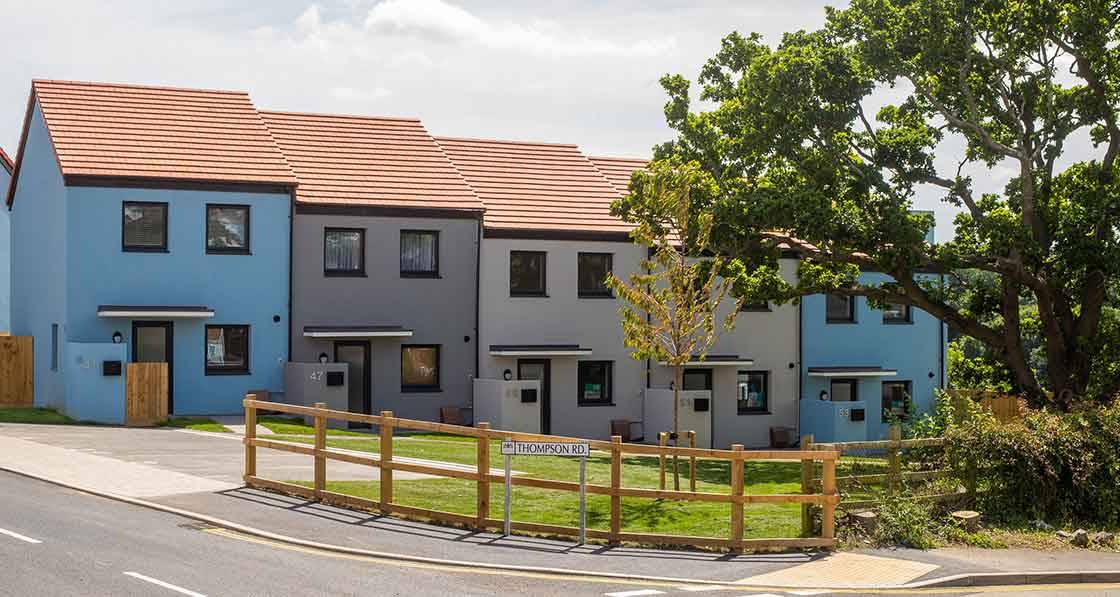
 Kenny McHugh
Kenny McHugh
- Blogs
- Posted
Secured by Design: crime prevention with CO2 co-benefits
More than one million homes have been built around the UK to security standards required by Secured by Design (SBD), the UK’s national police crime prevention initiative, with significant reductions in crime and with considerable benefits to the environment. SBD senior development officer, Kenny McHugh, explains what SBD could offer to Ireland.
This article was originally published in issue 31 of Passive House Plus magazine. Want immediate access to all back issues and exclusive extra content? Click here to subscribe for as little as €10, or click here to receive the next issue free of charge
One-third of all new houses and apartments in the UK over the last 20 years have been built to standards set by Secured by Design, a police organisation which has a network of SBD-trained ‘designing out crime’ officers in 43 police forces in England and Wales, as well as in Police Scotland and the Police Service in Northern Ireland.
These officers work with architects, developers and local authority planners at the planning stage to design out crime in a range of building types from private and social housing through to schools, hospitals, retail and commercial premises, and sport and leisure facilities.
Crime prevention measures focus on the physical security of buildings to ensure that products like doors and windows are sufficiently robust to resist attack by opportunistic burglars and can extend to the layout and landscaping of entire developments to maximise natural surveillance, create defensible space and limit excessive through movement.
Research has shown consistently over the years that SBD techniques work. In September 2017, a Police Scotland study of 3,000 housing association homes, built across more than 150 developments in Fife over the last 20 years, found reductions in crime of 87% year on year.
Importantly, not only does this deliver secure homes for residents, but also it brings benefits to hard-pressed police forces.
According to the Office of National Statistics, property crime in England and Wales fell by 64% from a peak in 1995 to 2014/15 – a period that spans the middle years of SBD’s 30-year, on-going campaign for increased security in the built environment.
One of the reasons why we believe we have been so successful is that we insist that all door and window products are fully certified. This requires factory production controls and regular product and test audits by a certifying authority. Our product accreditation provides a police badge to recognise high standards maintained over time.
Whilst building regulations for security exist in England, Scotland and Wales, there is no such regulation to compel security being incorporated in the Republic of Ireland.
In Northern Ireland, the Department for Communities requires that all social housing must meet the design requirements for SBD accreditation. The success of SBD in Northern Ireland has seen our security measures implemented in social housing and in hospitals, schools and libraries. The opportunities exist for us to expand the benefits of SBD into the Republic of Ireland. Earlier this year, we trained officers in crime prevention from An Garda Síochána (AGS) at their college in Templemore. Further training is in the pipeline.
We believe SBD measures are affordable with additional costs of £170 for a two or three-bed detached house, £240 for a ground floor apartment and £70 for an upper floor apartment. The Association of British Insurers has estimated that the introduction of SBD standards across the UK would bring more than £3.2 billion worth of savings to the economy over 20 years.
We’re also good for the environment too. A 2016 study by the University of Surrey and supported by SBD, the Home Office, and the Engineering and Physical Sciences Research Council found that crime committed in 2011 in England and Wales gave rise to over four million tonnes of carbon dioxide, equivalent to emissions of around 900,000 UK homes. Burglary resulted in the largest proportion of the total footprint (30%) because of the carbon associated with replacing stolen or damaged goods.
We joined the same partners again to support two further research studies published in February and March 2017. The first of these found effective burglary prevention measures, such as door and window locks, produce less carbon emissions than those generated by a domestic burglary, which is estimated to account for around one tonne of CO2.
The second showed that between 1995 and 2015, the carbon footprint of acquisitive and violent crime in England and Wales had dropped by 62%, a total reduction of 54 million tonnes of CO2. The study concluded that the focus on reducing high carbon crimes like burglary, could be encouraged and highlighted the ‘growing connection between crime and sustainability agendas.’
Among the most famous buildings to incorporate our crime prevention principles are the 2012 London Olympics site, the 2014 Commonwealth Games Village, Wembley Stadium, the National Stadium of Wales, and the Scottish and Welsh Assembly Buildings.
For design guides, visit: www.securedbydesign. com/guidance/design-guides.
For a video on how SBD works, visit: https:// youtu.be/jZ7oeAQcHmc.



